
In this lesson and resource, students learn what a thesis statement is and how it relates to an informational reading.
- Subject:
- English Language Arts
- Material Type:
- Lesson Plan
- Provider:
- ProCon.org
- Author:
- ProCon
- Date Added:
- 02/26/2019

In this lesson and resource, students learn what a thesis statement is and how it relates to an informational reading.
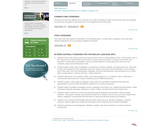
This lesson pairs a magazine article about the Edmund Fitzgerald shipwreck in 1975 with the Gordon Lightfoot song, "The Wreck of the Edmund Fitzgerald." After comparing and contrasting the elements of each text, students will choose a historical event and, using the song as a model, create a narrative poem about their chosen event. In addition, more contemporary songs and current events will also work for this activity.

In this lesson, students explore the political environment in England during the years that Thatcher was Prime Minister. Discussion questions are provided. In an associated activity, students will analyze excerpts from two speeches, one from Thatcher and the other from Labour Party leader Neil Kinnock.

The writings of Martin Luther helped spur the Reformation and inspired the rise of Protestantism in the 16th century. Luther gave different reasons for his break from the Catholic Church at different times in his life. This lesson features two sources attributed to Luther - an excerpt from the letter he wrote that accompanied what came to be his 95 Theses and part of a talk he gave later in life. Students compare the documents and consider how to weigh contrasting accounts of history written by the same person.

Includes six text-dependent questions, one constructed response writing prompt, and explanatory information for teachers regarding alignment to the CCSS for Thomas Jefferson's 1801 Inaugural Address.
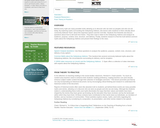
This lesson plan has students do research on the myths surrounding Lincoln's Gettysburg Address. They will engage in reading, writing, and research activities that will have them learn skills in distinguishing truth from fiction as well as developing a deeper understanding about an important American historical document. Links to suggested sites for students to do their research on the myths are provided in the lesson.

In this lesson, students discuss the meaning of “A More Perfect Union,†a speech about race made by then-Senator Barack Obama, during the 2008 Democratic primary campaign. Students will also examine and assess how textbooks position groups differently in our national historical narrative — and how this positioning affects our understanding of ourselves.

This lesson is designed to assist students with improving their use of punctuation to include: commas, semicolons, colons, and exclamation points. The lesson is designed to encourage students to focus on emotions and their connections with given forms of punctuation. By examining emotions, students gain the ability to better understand the different uses of various punctuation marks. The lesson includes multiple student handouts and examples. There are also pertinent extension activities attached.

Speech writing is a rhetorical art and provides the content for these scaffolded lessons that support the increased cognitive rigor of literacy standards with presidential writings.

In this lesson and resource, students use a research platform to kick off a long-term class project on an issue relevant to the community.
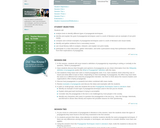
This lesson is designed to assist students through multiple sessions with identifying relevant propaganda techniques in literature, discussing persuasive elements found in print and non-print media and composing a persuasive essay. Lesson is appropriate for use with a provided list of novels to include Bradbury's Fahrenheit 451.

This resource includes a short quiz which focuses on Reading Informational standard 8. Students will read the excerpt taken from a blog and respond to four open response questions.

The Racing Project is high school level, school-wide, cross-curricular PBL project done at Tri-County Early College HS and was centered around the question: How can we innovate vehicle design solutions to win a race? With that question in mind, there were four different buckets containing different ideas for car designs: gravity games, combustion, electric, and human powered vehicles. Within each of these buckets the PBL groups (with help from an outside mentor) were to design a car to win a race to the best of their abilities using the power source bucket they were in.

Students read and analyze excerpts from texts written by Charles Darwin and Alfred Russel Wallace and answer questions about the information presented, developing their nonfiction reading comprehension. This activity serves as a supplement to the HHMI short film The Origin of the Species: The Making of a Theory.

In this lesson and resource, students build research skills such as skimming and summarizing.

Students read an article (which is included in this link) that asserts that all stories across time and medium can be put into one of seven models. Students will then search the newspapers and their own knowledge of books, film, television,etc. to compare and contrast with the nonfiction pieces as well as the article's theory about thematic connections. Any respected newspaper will suffice for this lesson.
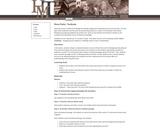
In this lesson, students critique a standard textbook account of Rosa Parks and the Montgomery Bus Boycott. They read and analyze two primary documents and consider how this evidence specifically contests the textbook’s account. First, the teacher elicits students’ existing knowledge about Rosa Parks. Then, students read a textbook passage and two conflicting primary documents. Finally, students write a revised textbook account or an editorial pointing out the textbook account’s deficiencies and how these affect our understanding of this important event.
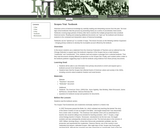
In this lesson students use a statement from the American Federation of Teachers and an editorial from the Chicago Defender to expand upon the textbook’s depiction of the Scopes trial as a clash between “creationists†and “evolutionists.†First, students read and analyze a passage from a selected textbook. Then they read documents showing different perspectives on the Scopes trial. Finally, each student writes a letter to the textbook publisher suggesting ways to edit the textbook using evidence from these primary documents.

This lesson is designed to apply Common Core State Standards and facilitate a comparison of informational texts and primary source material from the Scottsboro Boys trials of the 1931 and 1933, and the fictional trial in Harper Lee's novel, To Kill A Mockingbird (1960).

In this lesson plan, students will learn to critically evaluate